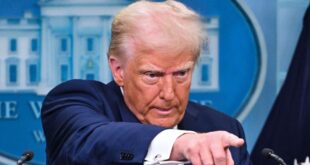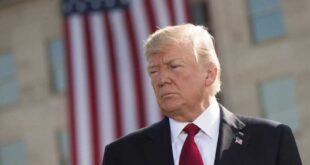Amer Ababakr
On the curve of this night and the next day, the world passes from the year of the Ukraine war to the year of broader stimulus in 2023 and beyond. Destinies are suspended, the fields of supposed clashes are widening, and cold wars are drawing maps that are candidates for hot explosions.
At the point of the Ukrainian eruption, the end does not seem close, nor are the peace negotiations on the table. The global nature of the clash with fire has developed in the Ukrainian arena, and the duel has become more borderline between Moscow and Washington, and has reached formulas threatening a “decapitation” blow from circles in the Pentagon, which Russia understood. As American plans to assassinate President Vladimir Putin, Moscow responded that the two countries’ relations are close to the brink of zero, and announced changes in its military doctrine, expanding in cases of the first resort to the use of nuclear weapons, with an emphasis on entering the “Avangard”, “Bulava” and “Sarmat” missiles. To service in large numbers, which are described in the West as “Satan” and “Doomsday” missiles, all of which exceed the speed of sound dozens of times, and any launch of them destroys “unfriendly countries” in Russian expression in half an hour, and Russia has, as is known, the largest nuclear arsenal In the world. Over the past ten months since the start of the war, Putin has always resorted to the tactic of waving the nuclear brink, and on the basis of the theory of his ally, the Russian nationalist philosopher Alexander Dugin, and his saying that there is no meaning to the world without a great Russia, even if Putin is politically responsible, he does not say explicitly because he will launch a nuclear war, knowing that all parties in it are losers along with the others, because the world has a stockpile of nuclear weapons, enough to destroy the world 14 times
Under the ceiling of an unlikely nuclear war, the conventional arms race doubled, and Washington increased its military budget to 850 billion dollars annually, while Moscow decided to double its war spending for 2023, and its weapons factories ran at maximum capacity, and Putin said that he was preparing for a prolonged war in Ukraine, which might develop. It contains his declared goals, and goes beyond his decision to annex the four provinces in eastern and southern Ukraine, moving from the stage of depleting stocks of old Soviet weapons, introducing the newest and most advanced weapons, and pledging to destroy the “Patriot” missile systems, which Washington recently decided to give to the the Ukrainian President Volodymyr Zelensky, who coincides with “Difficult and bitter” days and battles, as he described it. The Russians do not fight in the manner of “shock and awe”, advancing meter by meter, and do not appear to be in a hurry and move slowly, in raids to destroy Ukraine’s military and civilian infrastructure, after which they may resort to a stormy attack within Winter or at its end. They rely in parallel on the tactics of draining the economy of the West and exhausted Europe in particular, after the announced financial costs of supporting Ukraine from the Americans and Europeans amounted to what it exceeded $120 billion to date, then doubled Western burdens and costs, after decisions to cap Russian gas and oil prices, in addition to the growth of alternative markets for Russian energy resources.
Mr. Putin shocked Western circles by announcing his ministers to reduce oil production, which ignites prices in the market, with his ban on exporting Russian oil to the G7 countries, the European Union and Australia, while giving the Russian president an opportunity to maneuver, and rights to exclude those who want in time of need, and prepare the Russian economy to bear the consequences of 12 thousand types of Western sanctions, and strengthen the alliance with China, and the development of manifestations and essences of the work of the Chinese-Russian pole is growing the influence, from the heart of Europe to the Pacific Ocean and the North and South poles, and the pursuit of Western American hegemony in the worlds of Asia, Africa and Latin America, and the Europeans’ cries intensified from America’s exploitation of their conditions, the astronomical exaggeration in alternative energy prices for Russian resources, and the diminishing confidence of America’s Atlantic allies and others in Washington’s ability to ensure their protection and strategic security. And in the course of the drama of changing the world, and the steady shift from the stage of the sole ruling American pole, to the world of multipolarity, the “cunning of history” appears clearly present, as it often happens in the lives of individuals, groups, states, and even the international system, that one party imagines that it is going to build a palace, so if with it, it suddenly discovers that it went to dig the grave of the end, not the palace of eternity, and the example is suitable to illuminate the situation of the US today, as it behaves ferociously with the “sweetness of the spirit” of bulls at the time of slaughter, and strikes randomly, perhaps in response to an instinctive fear of losing its control over the throne of the world, in terms of economy, weapons and technology. It is true that it qualifies to remain as a superpower among the many in the creeping world with its new balances, but it will certainly not remain a “superpower” by a thousand and one definitions, and it will not be the first among the many powerful old and new, and its allies and followers since the end of the second “world” war are no longer in a state of reassurance.
For a lasting peace imposed by the US power, and the examples are apparent, starting with Europe, the closest ally. France continues its protest, and perhaps its rebellion, against the guarantees of the US defensive umbrella, and seeks a European defensive umbrella, and Germany, which has the heaviest weight in the economy, is looking forward to getting rid of the measures that an American policy imposed on it after the defeat of Nazism, which was preventing it from amplifying its army and military strength. It’s leadership decided to allocate 120 billion euros annually to modernize its army, with a remarkable growth of Nazism and the restoration of the glory of the “Fourth Reich” among the German public, and Japan on the other side of the world, continues the process of loosening restrictions on its military armament, which was imposed by the constitution of US General MacArthur, after the crushing of Tokyo and the bombing of Hiroshima and Nagasaki with American atomic bombs. Moreover the liberation of Japan and Germany from contracts of “military castration”, is welcomed today by Washington, despite its blatant significance in breaching and overthrowing the arrangements of the international system that America formulated, and Washington’s acceptance of retreating from what was, seems an eloquent expression of its inability to protect allies and followers on its own. It is believed that the increase in their strength is in its favor temporarily, but the essence of what is happening in what we think is that the return of the German and Japanese military dress, and what it is accompanied by the return of the national spirit in the two countries after a long hiatus, redrawing the boundaries of the differentiation of interests, as the German leadership went to in disobeying American orders, with the need to blockade the largest Chinese competitor, and Berlin’s preference for expansion in it’s economic relations with Beijing, in exchange for Washington’s keenness to impose additional customs on imports of Chinese products.
In addition to its ban on the activity of major Chinese technology companies, and pressure on allies and large and small followers to cut off communication with China, which has become the first factory in the world, and has the largest trade surpluses with most regions of the world, including America itself, which feeds tendencies of anxiety and division of obedience to America in the four corners of the world. What pushes Washington to ignite fires and hotbeds of war tension, as happened and is happening in the Kosovo clash with Serbia, and in East Asia around the issue of Taiwan, which China insists to restore it at the appropriate moment, and continue to show its strength on its shores and in its airspace, and double the pace of its joint military maneuvers with Russia, and relax the rope for North Korea in nuclear and missile tests, and protect “Pyongyang’s” activity with the guarantees of the Chinese and Russian “veto” in the UN Security Council. To the extent that North Korea launched a military drone recently in the sky of the southern capital, Seoul, without the US-backed South Korean defenses being able to shoot down the invading drones which prompted the Ministry of Defense in South Korea to present an apology to its people for the incident, which suggests to America’s allies in the Pacific Ocean and around the East and South China Seas that there is no longer an American capital against danger, and that the wars that Washington hastened are not guaranteed results in its favor, and that going to hasty military wars with China may dig the graves of the ends for economies that are mainly interested in commercial interests. One may discover that building bridges with China is safer and less expensive, and something of that is happening in our closest regional scope, and it may not be right to ignore the harbingers of an incoming war that threatens Washington and Tel Aviv against Iran, after the setback in the negotiations to renew the Iranian nuclear deal. This is especially after the return of Benjamin Netanyahu with a government that is the most extreme and aggressive, and his plan to drag Arab parties into a war with Tehran, and the likely possibilities of bloodier explosions on the Palestinian front, in a new year burdened with reasons for motivation on a global scale as a whole.
 Geostrategic Media Political Commentary, Analysis, Security, Defense
Geostrategic Media Political Commentary, Analysis, Security, Defense





